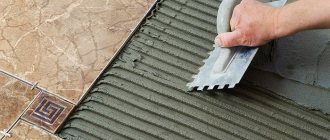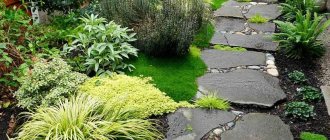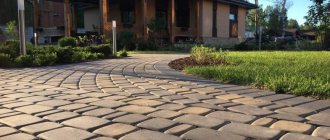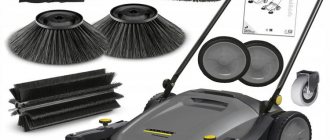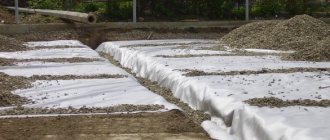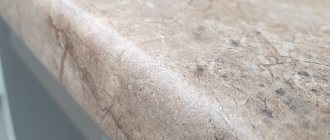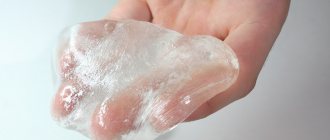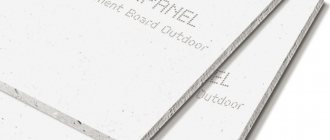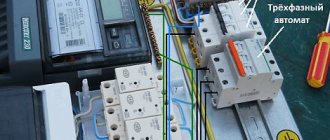| Geotextile 100 from 16.50 RUR/m² | Geotextile 150 from 19.90 RUR/m² | Geotextile 200 from 21.00 RUR/m² | Geotextile 250 from 25.50 RUR/m² |
*The minimum price of geotextiles is indicated for volumes of 3000 meters and above, subject to pick-up from the factory.
**Delivery, as well as the price of geotextiles when ordering from a WAREHOUSE IN MOSCOW, can be calculated FREE OF CHARGE by calling +7 (499) 271-96-00 or filling out a request on the website.
Call us, we will offer YOU the best prices!
Composition and types of geotextiles
Geotextiles are similar to ordinary fabric, but they can have different structures. This material consists of the finest synthetic threads, which are pressed together and are of a polyester or polypropylene nature.
Depending on the dominant ingredient in the composition, geotextiles come in the following types:
- Polyester. The material consists of thin fibers. Polyester geotextiles are environmentally friendly, but they have low resistance to acids and alkalis.
- Polypropylene. Durable and reliable material that does not rot or mold. This type of geotextile has an excellent filtration coefficient.
- Combined. This type is made from various recyclable materials. It has a low cost, but is inferior to polypropylene and polyester material in strength and durability. Combined geotextiles include natural additives that quickly rot. In their place, voids form, increasing the likelihood of damage to the product.
Watch the video what geotextiles are
Taking into account the dominance of one or another component, geotextiles are usually distinguished into:
- polyester geotextiles - predominantly containing thin polyester (polyester) fibers. This material is more environmentally friendly, but less resistant to the aggressive effects of alkalis or acids;
— polypropylene geotextiles are a very durable material that is resistant to all kinds of influences. It never rots, mold “doesn’t like it”, has an excellent filtration coefficient;
- multi-component (mixed) geotextiles - the technology of its industrial production involves the inclusion of all kinds of safe recyclable materials, for example, cotton products, viscose waste and wool waste.
This material is cheaper than polyester (polyester) and polypropylene analogues, although it is inferior to them in durability or lack of strength reliability. The additives included in the component composition are natural, and therefore quickly break down (rot). In these places, voids form, increasing the risk of destruction of the product.
Recommendation! Domestic geotextiles are superior to foreign analogues in many respects (stiffness, modulus of elasticity, frost resistance, etc.) and are much more cost effective for the buyer!
Which geotextile to choose?
needle-punched geotextile
dornite
Heat set
Heat treated
Knitted, with stitching
construction
The choice of material depends on its purpose. The most popular options:
- Needle-punched. This tissue is produced by bonding microscopic fibers together. Moisture passes through its structure, so the material will not be flooded by precipitation.
- Doronite. This geotextile is suitable for constructing a reinforcing substrate and has excellent filtration properties.
- Heat set. The fibers of this geotextile are carefully melted together through heat treatment. This production technology gives the material high strength. However, the heat-fixed variety has low filtration properties, because its structure allows moisture to pass through only in the transverse direction.
- Heat treated. The ingredients are fused and pressed together at the same time. As a result of this processing, an extremely dense and reliable material is obtained. Most often, this geotextile is used for waterproofing.
- Knitted, with stitching. The fibers of this material are tied together with strong threads. Knitted geotextiles effectively pass liquid through their structure, but have low resistance to mechanical loads.
- Building. This material allows liquid to pass through only from the inside, so it can be used for waterproofing.
It is necessary to select material for arranging garden paths taking into account the following criteria:
- Density. The throughput of the geotextile fabric depends on this factor. The density of the drainage material should be in the range from 150 to 300 g/m³. The pore size should be 175 microns. If the density of the geotextile is lower, it will be less durable.
- Filtration coefficient. This indicator indicates the water permeability of the material. The optimal value for drainage material is from 100 to 300 m/day. The exact indicator is selected depending on the groundwater level, the volume of climatic precipitation and the degree of soil permeability. If the garden area is regularly moistened, it is recommended to take a canvas with the highest filtration coefficient.
- To arrange a garden or summer cottage, you can choose any type of geotextile. However, experts recommend giving preference to polypropylene material, which is made of smooth and durable monofilament. This fabric is characterized by increased resistance to silting. In addition, you can use the heat-bonded type, because needlepunch quickly silts up and does not allow moisture to pass through well.
- It is not advisable to lay woven material under garden paths, because... its fibers quickly rot in the soil.
- The tensile strength level of garden geotextile fabric must be at least 1.9-3 kN/m. The resistance of the product to punching must be selected based on what material will be used for drainage, as well as how deep the drainage system will lie and how intensely the soil will move. In most cases, an indicator of 400-500 N is sufficient. When using large crushed stone, this geotextile indicator should be higher. All necessary information can be found on the product packaging.
- Financial savings. This factor is of great importance. When choosing a canvas, you need to choose the right ratio of quality and cost. Most often, the price of geotextiles ranges from 10-20 rubles. for 1 m². The cost of imported high quality material can reach 200-300 rubles. for 1 m². At the same time, Russian products are not inferior in quality and reliability to many imported analogues
Geotextile density
When choosing geotextiles for garden paths, you must pay attention to the density of the material. It is believed that the higher this indicator, the better the material in front of you. Density ranges from 17 to 600 g/m2 or more. The thinnest geotextiles are used to protect the soil from birds and to cover greenhouses and greenhouses.
To organize garden paths, material with a density of 100-250 g/m2 is useful. The choice is best made based on an analysis of the soil type and the characteristics of the site. So, if the territory is flat and the soils are stable, then it will be enough to use geotextiles with a density of 100-150 g/m2; if the soil is mobile and unstable, then it is better to use geotextiles with a density of 250 g/m2 or even more. In most cases, they settle on the option of 150-200 g/m2 - this is an excellent ratio of strength and price.
Advantages and disadvantages of geotextiles
This material has the following advantages:
- compact dimensions;
- small weight;
- high level of strength;
- affordable price;
- the ability to “breathe” (for Dornit geotextiles);
- easy and quick installation;
- easy transportation;
- the ability to maintain normal heat exchange in the soil;
- high resistance to chemical and mechanical influences;
- ability to inhibit weed germination, etc.
Disadvantages of geotextiles:
- low resistance to direct exposure to ultraviolet radiation;
- high cost of some types of material.
What it is
Garden paths unite all architectural objects and recreation areas on the territory of a summer cottage, therefore the functional significance of the paths is no less important than the decorative one. The service life, practicality and reliability of a garden path depend on the technology of its arrangement and the quality of the materials used. So that the coating does not deform during operation, it is recommended to use geotextiles.
Strengthening the soil with geotextiles significantly extends the service life of objects
Many summer residents are interested in what geotextiles are and what their advantages are. Geotextile, or geofabric, is a synthetic fabric that consists of ultra-thin polypropylene threads and hairs pressed together.
The advantages and technical features of geofabric include:
- high degree of resistance to mechanical damage, dynamic loads and precipitation;
- strengthening the soil on slope areas and reducing the likelihood of soil erosion;
- the ability to maintain an optimal level of heat exchange in the soil;
- preventing subsidence and deformation of asphalt, concrete, paving slabs and other materials used for laying garden paths;
- creating a barrier layer that prevents the active growth of weeds;
- improvement of waterproofing, filtration and drainage properties of the structure;
- no difficulties with storage, transportation, installation and operation;
- the possibility of local repair and partial replacement without global damage to the path surface.
The intended purpose of geotextiles is the ability to withstand large dynamic loads and reduce the risk of soil erosion. Correctly selected type and density of the material, as well as compliance with installation technology, significantly extend the service life of the architectural object.
Geotextiles for garden paths
A beautiful garden plot requires properly and efficiently arranged paths. They can be constructed from different materials. Sometimes the marked strip is sprinkled with pebbles or crushed stone, after which the surface is carefully leveled.
You can arrange garden paths using granite or basalt paving stones. When constructing them, it is imperative to ensure that there is a good drainage system for water.
When arranging paths made of pebbles or gravel, it is enough to lay 1 layer of geotextile fabric. If additional paving is carried out with tiles, it is necessary to lay out an additional underlay. In this case, it is better to use 2 layers of geotextile.
Crushed stone paths on sandy and clayey soils must be constructed carefully, because the coating can quickly shift, bend or sink into the soil.
It is forbidden to lay tiles on dry mixtures, because with the arrival of cold weather, its surface will crack, and the monolithic concrete base will prevent water from draining.
Fiberglass for garden paths
Unlike the first type, fiberglass has a woven production method. Fiberglass for garden paths is less popular than polymer canvases. There are several reasons for this. Firstly, fiberglass is often sold in rolls, without the possibility of cutting. It is not profitable to buy it if you need small sizes. Secondly, it is not recommended to use it for paths made of crushed stone, because small pebbles can tear the fabric. However, it can be used with sand. It also decomposes under the influence of the alkaline environment of the soil. So, geotextile is often used to separate layers under tiles. By the way, it is advisable to find out the width of the future garden path in advance. Then it will be easier to choose the roll of the right size. In addition, this will save you money, since there will not be a lot of scraps left.
So, geotextiles play an important role in ensuring that garden paths last as long as possible. Which of the above materials to choose is up to you. It is only important to choose a canvas taking into account further use.
Our company sells and delivers geofabric using transport companies available in your region. Delivery within Moscow and the Moscow region is possible using the company’s own transport. If you have any questions, our managers will answer them. If necessary, they will help you place an order and select additional materials for decorating your site.
Step-by-step instructions for installing garden paths
To achieve a good result, you need to first prepare the following materials and tools:
- required number of geotextile fabrics;
- tiles or paving stones;
- sand;
- crushed stone;
- shovel;
- rubberized hammer.
To begin with, the outline of the garden path is placed. For this purpose, you can use bricks, tiles, etc. To achieve maximum evenness, it is better to mark the contours with long cord and stakes.
Arrangement of slab-crushed stone path using geotextiles
The construction of a crushed stone path with a geotextile backing is carried out sequentially and according to the following scheme:
- First, paving stones or tile products are laid out on unprepared soil. This is necessary to calculate the amount of material and determine the boundaries of the structure.
- A trench is dug along the intended width. Its depth can be from 30 to 40 cm.
- The bottom of the recess is leveled. Everything unnecessary is removed from it, including plant roots and debris.
- After this, geotextiles are laid on the bottom surface. In this case, its edges should protrude 4-6 cm above the ground.
- Then crushed stone is poured. This layer should be about 14-15 cm thick.
- After this, it is necessary to lay the next geotextile layer.
- Fine sand is poured on top of the laid material. This layer should be 11-12 cm thick.
- The formed substrate must be compacted. After this, you can lay tiles or paving stones.
- After completing the laying of the paving material, you need to trim off the protruding parts of the geotextile fabric.
- Fine-grained sand should be poured into the cracks between tiles or paving stones. Additionally, the coating must be compacted by tapping its surface with a rubberized hammer. The path must be compacted until all the cracks between the tiles are filled with sand.
- At the final stage, you only need to decorate the edges of the path. To do this, you can sprinkle them with fertile soil with seeds of garden plants.
How to lay geotextiles correctly
For a long service life, it is important not only to select the correct geotextile, but also to install it without errors.
Laying rules
When carrying out work, you must adhere to certain rules:
- the surface for laying the canvas must be well leveled;
- the packaging is opened immediately before starting work, as some materials are sensitive to sunlight;
- calculate the required dimensions and cut the strips taking into account the supply of material, but also so that there are as few scraps left as possible;
- when calculating dimensions, you should take into account an allowance of 5–10 cm, which is necessary for slight deformation of the geofabric after covering it with sand on top;
- if geotextiles are laid on a layer of gravel or pebbles, then a single layer is used; when laid directly on the ground, the fabric is placed in 2 or 3 layers;
- geofabric is laid without tension, but folds should not be allowed to form;
- the overlap of the canvases must be at least 20 cm;
- The junctions of the canvases with each other must be well fixed. They can be fastened with a construction stapler or soldered with a construction hairdryer;
- when laying strips at joints, it must be taken into account that the geofabric laid on a higher area must cover the material from a lower area;
- after pouring crushed stone onto the geotextile, it is advisable to wrap its edges 15–20 cm from above to prevent contamination of the internal components;
- When fixing the material to the ground using long staples, the damaged areas must be glued with bitumen.
Step-by-step instructions for building a path with your own hands
Paths using geotextiles should be laid according to a certain algorithm:
- Mark the paths using pegs and a rope stretched between them.
- Dig a trench about 30–40 cm deep and level its bottom well.
- Fill with a layer of sand (preferably fine-grained river sand) up to 5 cm thick.
- Lay geotextiles on the sand cushion so that the edges of the material cover the slopes of the recess by 5–10 cm.
- Connect the joints using a stapler or solder them with a hair dryer.
- Pour a layer of fine crushed stone 15 cm thick and level it.
- Lay another layer of geofabric in the same way as the first.
- Cover with 10 cm of sand.
- Let stand for 2-3 days.
- Moisten the sand layer or cover it with tile adhesive.
- Lay the base covering.
Important! When using gravel or pebbles as the final covering, only one layer of geofabric can be laid, since these materials do not have much mass and will not cause significant subsidence of the structure.
When installing paths in their dachas, many owners wonder: why spend money on geofabric if you can save money. Experienced developers give a negative answer to this question. The use of geotextiles increases the service life of any structures by an order of magnitude, helping to maintain their original appearance for a long time.
Features of a track with a geotextile backing
A garden path equipped with geotextile fabrics will retain its configuration for a long time.
In this case, the crushed stone layer will be used as drainage, through which moisture will freely drain into the sand and soil. As a result, the layer is compacted, and the geotextile fabric ensures the unhindered removal of excess moisture.
Sand poured onto geotextiles acts as a cushion for decorative material laid out on the surface. If any tile product begins to sag, the path can be quickly and easily repaired. To do this, you just need to lift the settled element and sprinkle a little moistened sand under it, then compact it with a mallet.
Other tasks of geotextile material in landscape design
Geotextile fabrics can improve the area and make many jobs easier. In addition, this material allows you to realize original ideas.
Geotextiles are used for fixing coatings and zoning, as well as constructing drainage and effectively cleaning the soil. If you lay this material under a turf layer, you can:
- slow down soil erosion;
- strengthen the hills;
- prevent the natural removal of beneficial compounds from the soil;
- prevent the growth of weeds whose roots cannot penetrate the dense layer of geotextile;
- ensure effective water drainage, etc.
A little about geogrid
Many gardeners use geogrids to landscape their plots. This structure is made of the same materials and using similar technology as geotextile fabric.
Geogrid can be used to prevent soil movement and damage. In addition, it prevents soil from being washed away. This material is not afraid of aggressive chemical influences, does not contain toxic substances in its composition and is highly resistant to exposure to sunlight.
Advantages of geotextiles
Regardless of the manufacturing method and the materials used, the material has a huge list of advantages that affect the quality of landscape design:
— lightness and compactness;
— decent strength and good ability to withstand tensile loads;
— price efficiency;
— “Doronit” allows water and air to pass through, while retaining even microscopic particles of soil;
— ease of installation and ease of transportation;
— maintains optimal heat exchange and ensures uniform soil temperature;
— good resistance to mechanical (shock) and chemical influences;
— inhibits the germination of weeds and many others. etc.
